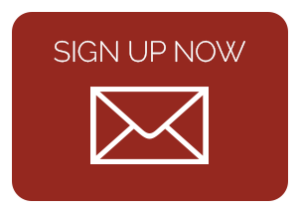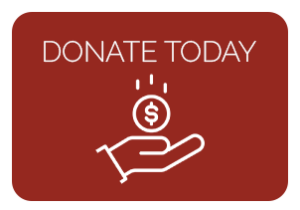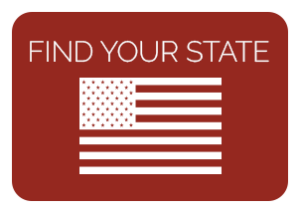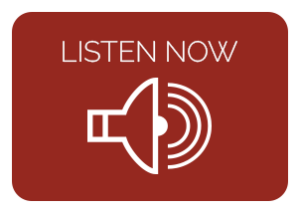No Liberty For You
Summary
- Subject(s): Write a report on the mythology surrounding the Plymouth colony compared to our best understanding of the actual event including a defensible thesis, evidence (e.g., specific facts, details, and data), and an organized structure with sentence variety and word choices to create clarity and concision in a formal style. 11.3.W.2 11.3.W.3 11.4.W.1 11.4.W.2 11.5.W.111.5.W.2 11.5.W.3 11.5.W.4 11.5.W.5 11.5.W.6 11.6.W.2 11.6.W.3 11.6.W.4 11.8.W
- Topic or Unit of Study: English, Language Arts
- Grade/Level: 11th Grade
- Objective: Unravel the factual history from the American mythology surrounding the Pilgrims traveling to North America up to what is considered the inspiration for the Thanksgiving holiday.
- Time Allotment: 4-5 Class Periods
Pro Educator Tip: A note on language. The preferred term for American Indians is simply “American Indian.” “Native American” didn’t come about until the 1960s and 70s, around the same time as “African American” and “Asian American.” Many American Indians explicitly rejected the new label, viewing it as an attempt by white Americans to erase their identity. That said, it has gained more acceptance over the decades and you should be fine using either term, interchangeably.
Pro Educator Tip: The provided text is from the most current version of the Updated New Revised Standard Version of the Christian Bible. Many scholars consider this version to be the most accurate translation. If your learners ask that is why this text was included. It is abbreviated “NRSVue.” Some of your learners may be more familiar with other versions and you can tell them that is great, but for this class, the NSRVue will be the version that you intend to use.
Implementation
Learning Context:
Many historians have identified “myths” surrounding the foundation of the Pilgrims’ landing at Plymouth, leading to what is considered the inspiration for the Thanksgiving holiday. This lesson seeks to unravel those myths from our best understanding of history.
Pro Educator Tip: This may be a difficult lesson for some of your learners because it will challenge a lot of things they have learned from popular media sources. If this comes up, be prepared to let them know that TV shows, movies, and books often embellish the facts of what actually happened in an effort to tell better stories. Let them know your objective is to teach the real history.
Procedure:
-
Anticipatory Set:
To begin this lesson you will let your class know that much of what they think they know about the founding of the Pilgrims’ landing at Plymouth, and the Thanksgiving holiday are actually modern myths. Try to get them excited to try to better understand what is currently the best understanding of the history behind these American myths. You will need some sheets of blank or lined paper for an exercise during period 1 of this lesson
-
Direct Instruction:
Read or paraphrase this lecture:
Epidemics of smallpox, typhus, influenza, diphtheria, and measles swept the Americas subsequent to European contact. It is estimated that up to 95% of American Indians were killed by disease. In fact, one such epidemic hit New England coastal Indian communities in 1616, just prior to the arrival of the Mayflower. The Mayflower set out from Southampton, England on July 26. This is the first myth I am going to address for you. Recall that the settlers from the Mayflower are going to set up a colony named “Plymouth.” Some historians claim that the settlers named the colony themselves after the city in England where they departed. In fact, they departed from Southampton with 2 ships, the Mayflower and the Speedwell. The Speedwell encountered some problems early on so they stopped off at Plymouth, and when it was obvious that it couldn’t continue, they loaded all of the supplies onto the Mayflower and continued onto North America. So, why did they call their colony Plymouth? Well, remember John Smith from Jamestown? In 1614 Smith returned to North America and, starting in modern-day Maine mapped what he called “New England.” This map was published in 1616 and the Mayflower passengers had a copy of his map (a .pdf of this map is included in the Materials section below.) On that map, he had named an existing village Plymouth. We will come back to this.
Now, maybe not really a myth, but an important, but seldom told aspect of this event is how many of the Mayflower passengers were pilgrims. There were a total of 132 people on the Mayflower. 30 of the people were crew, and 102 were passengers.
Ask your learners if any of them know how many of those 102 passengers were pilgrims.
The correct answer is 37.
Continue Reading:
On November 9, 1620, the Mayflower spotted land and realized that they were approximately 200 miles north of their intended destination on the Hudson River.
Time to bust another myth, you see, the Mayflower set out, not as a voyage to the Americas to flee religious persecution (they had been living in Leiden, Holand before that and were running out of money because they had difficulty finding employment in a foreign country. Also, they didn’t want their children to grow up Dutch.), but instead to try to capitalize on the profit to be made by hunting and skinning bevers and selling the pelts back in England as well as the large timber supply located in North America. They tried to sail south, but they were blocked and had to land in Cape Cod in what is now Massachusetts. Well, several of the non-pilgrims (remember they outnumbered the pilgrims almost 2 to 1) decided that because they were so far outside of their legal charter they should be released from their service. We will talk more about indentured servitude later this semester, but suffice it to say, that almost everyone on board who wasn’t crew had entered into a contract of indentured servitude. Several of the non-pilgrims saw this blunder as a way for them to achieve freedom. Specifically, they claimed they would “would use their own liberty; for none had power to command them.” (This is a direct quote from William Bradford one of the Pilgrims and a signatory of the Mayflower Compact. A link to the primary source is located in the instructional materials section. It is on page 207 and now is a good opportunity to pull up this page and show the class the fact that we still have all of these documents.)
To prevent the group from breaking apart (and thus a loss of profit and security for the Pilgrims, as they represented a group) they convinced the captain and a few of the other non-pilgrim men to sign onto a new agreement. This is what is known as “The Mayflower Compact.” They agreed to submit and be obedient to the will of the majority in the group, for the greater good, rather than allow for any individuals to achieve individual liberty. In both the first and last sentences they refer to themselves as “loyal subjects” of King James (the king of England at the time.) So, it should be obvious that they did not consider themselves separatists, nor did they consider themselves to be “fleeing” the rule of King James.
(An image of a plaque of the compact is in the instructional materials. The original compact has been lost, but several people wrote about it.)
-
Guided Practice:
Tell your learners that you are getting them ready to write an essay on myths vs. our best historical understanding of the Pilgrims, the Plymouth settlement, and the event that went on to inspire the first Thanksgiving. For the rest of the class period you are going to be workshopping research questions. Do not supply your learners with any of these, but if you need some example research questions here are some:
- What are the most common myths about the Pilgrims and the first Thanksgiving, and how did these myths originate?
- How did the actual relationship between the Pilgrims and the Wampanoag people differ from the popular narrative of mutual friendship and cooperation?
- What were the primary motivations and challenges faced by the Pilgrims in establishing the Plymouth settlement, and how do these compare to the simplified stories often taught in schools?
- How did the events of the first Thanksgiving, as described in historical accounts, differ from the modern-day celebration and its associated traditions?
- What role did disease, conflict, and colonial expansion play in shaping the interactions between the Pilgrims and Native American tribes, and how are these factors often overlooked in popular retellings?
- How have historical inaccuracies in the Thanksgiving story impacted the cultural identity and historical understanding of Native American communities, particularly the Wampanoag?
- What evidence exists to support or refute the claim that the first Thanksgiving was a harmonious and celebratory event, and how has this evidence been interpreted by historians?
Class Period 2:
-
Direct Instruction:
Start off by asking your learners if they enjoy Thanksgiving. Then you can ask them what their favorite parts are. When you receive a couple of answers you can say, wow, I am surprised none of you said anything about the traditional Thanksgiving deer. (or eel if any of them do, happen to eat deer at Thanksgiving.) And follow up with: “Okay, I am kidding a bit, but today we are going to finish our discussion about Thanksgiving and the PIlgrims and go over our best understanding of the history that inspired our modern holiday.” Then read or paraphrase this lecture:
Initially, when the Pilgrims got off of the Mayflower they saw evidence of extreme depopulation (remember because of the illness.) They attributed it to the “good hand of God … that he might make room for us there.” Yes, that is correct, when they found evidence of the massive death of Indians, including entire villages, they thanked God that he had killed the Indians to make room for his “chosen people.” The Pilgrims sent out scouts to try to find edible plants, animals, or Indians, but, they found nothing but abandoned villages. So, the Pilgrims raided the supplies of these villages and stole what food they could find so they could survive the winter of 1620.
All of the individuals worked through the winter building their first structure for shelter on land. They even worked on Christmas Day.
Ask your learners what they think about this. You might say something like “We know the Puritans were very religious, why don’t you think they prioritized Christmas?”
The correct answer is that Christmas was a “Mass.” Mass (even Christ-Mass) was an “evil,” “Catholic,” practice that only heretics would celebrate. In fact, just a few years later when they got around to writing their own, local, laws the celebration of Christmas was banned in New England for decades. By their logic, if God meant for people to celebrate holidays like Christmas or Easter they would be mentioned in The Bible.
After a brutal winter, spring came, and the remaining settlers met some local Indians. The first was Samoset, an Abenaki (pronunciation) Indian who told the settlers that they had settled in Wampanoag (pronunciation) lands. Samoset told the settlers that the ruler of this area was “Chief Massasoit.” (pronunciation) This man’s real name was Ousamequin, (pronunciation) but the British settlers confused his title with his name and a LOT of histories get this detail wrong. Ousamequin and Governor William Bradford (remember him from earlier) made a pact and part of their deal was that an Indian named Tisquantum (pronunciation) (Again, a LOT of histories call this man by the wrong name “Squanto” but his name was Tisquantum.) would remain in the settlement to show the settlers how to survive. The surviving Wampanoags had learned a healthy fear of disease. While they had always been hygienic and bathed regularly, this was not true of the Europeans. According to “Squanto” a biography of Tisquantum by Feenie Ziner, Tisquantum tried on multiple occasions to teach the Europeans to bathe because, to the Indians, they really stunk. Tisquantum showed the pilgrims some farming techniques, and the deal gave them access to fields that had been abandoned due to the epidemic of 1616-1619. Finally, we get to the fall harvest in 1621. You may be expecting me to give you a primary source and an exact date, but, unfortunately, the meal was so unremarkable that only one person wrote about it at all, and it was in a letter that may have been written weeks after the event.
Part of the description is here, but the entire letter is linked in the suggested resources below.
He wrote: “[A]fter we had gathered the fruit of our labors; they four in one day killed as much fowl, as with a little help beside, served the company almost a week, at which time amongst other recreations, we exercised our arms, many of the Indians coming amongst us, and among the rest their greatest King Massasoit, with some ninety men, whom for three days we entertained and feasted, and they went out and killed five deer, which they brought to the plantation and bestowed on our governor, and upon the captain, and others.”
An important line here is “we exercised our arms.” You see, according to The Wampanoags, they were not invited. Instead, they showed up after they heard the settlers shooting their muskets into the air for fun. The Wampanogas thought that they needed to aid the settlers. The Wampanoags provided five deer while they were there, and the celebration lasted three days. There were birds (though it is unclear if any turkeys were eaten,) fish, eel, corn, shellfish, and possibly cranberries from the area’s natural bogs. They did not have potatoes, pasta, cheese, (so no Mac and Cheese), or pies.
-
Check for Understanding:
Your learners should have excellently crafted research questions ready for today. Some of them may want to revise their research questions (which is fine, but, don’t allow them to spend too much time on that.) For today they will be crafting their Thesis Statements. These statements should be clear and communicate to the reader of their paper exactly the direction they are going. They should answer their chosen research question. Should any of them finish (Perhaps because they worked ahead, or just because they craft one very quickly) you can tell them they can begin work on the first draft of their paper. Don’t show these to your learners, but, if any of them need help here are some example thesis statements to help you help them:
- While the popular narrative of the first Thanksgiving emphasizes harmony and cooperation, historical evidence reveals a more complex and often contentious relationship between the Pilgrims and the Wampanoag people.
- The myth of the Pilgrims seeking religious freedom oversimplifies their motivations, which, we now understand, were more in line with economic opportunities and nationalism, reflecting broader colonial ambitions.
- Contrary to the idyllic portrayal of the Plymouth settlement, the Pilgrims faced severe hardships, including disease, starvation, and internal conflicts, which are often glossed over in traditional accounts.
- The modern celebration of Thanksgiving, with its focus on individual families and feasting, bears little resemblance to the historical event, which was an opportunistic and pragmatic gathering influenced by survival needs.
- Historical inaccuracies in the Thanksgiving story have contributed to the marginalization of Native American perspectives, particularly those of the Wampanoag, whose experiences and contributions are often overlooked.
- The enduring myths surrounding the Pilgrims and the first Thanksgiving serve to perpetuate a sanitized version of American history, obscuring the realities of colonialism and its impact on indigenous populations.
- The Mayflower Compact, which established a collective governance structure, contradicts the myth of early American individual freedom by emphasizing communal responsibility and mutual consent over personal autonomy.
- While early American myths often celebrate individual freedom and self- reliance, the Mayflower Compact reveals a foundational reliance on collective decision-making and social cohesion, challenging the notion of unrestrained personal liberty.
-
Direct Instruction:
For this lesson, you will be utilizing the PragerU video “What’s the Truth About the First Thanksgiving” A note that the Oklahoma State Department of Education has a partnership with this organization and claims they are “engaging, educationally sound, and classroom-friendly.” However, as with every resource, please ensure that this content is appropriate for your district before showing this video.
Tell your class that you will be showing an example of a modern resource that attempts to give the history of the Pilgrims and Thanksgiving.
Begin showing the video and pause at the 0:25 mark. Read or paraphrase this explanation:
This isn’t a “new” critique of American Thanksgiving. The 1836 “Eulogy on King Philip” William Apess, a Methodist minister who wrote about New England Indian issues wrote: “ We say, therefore, let every man of color wrap himself in mourning, for the 22nd of December and the 4th of July are days of mourning and not of joy.” and “O Christians, can you answer for those beings that have been destroyed by your hostilities, and beings too that lie endeared to God as yourselves, his Son being their Savior as well as yours, and alike to all men? And will you presume to say that you are executing the judgments of God by so doing, or as many really are approving the works of their fathers to be genuine, as it is certain that every time they celebrate the day of the Pilgrims they do? Although in words they deny it, yet in the works they approve of the iniquities of their fathers. And as the seed of iniquity and prejudice was sown in that day, so Class Period 3 cont.: f. Direct Instruction cont.: it still remains; and there is a deep rooted popular opinion in the hearts of many that Indians were made, etc., on purpose for destruction, to be driven out by white Christians, and they to take their places; and that God had decreed it from all eternity.” That doesn’t seem like someone very happy with celebrating the pilgrims. Beginning in 1970 there has been a “National Day of Mourning” in Plymouth on behalf of the American Indians of New England. (The plaque is included in the Resources for this class. So, yeah, not a new idea at all, but let’s keep going.
Pause again at 1:05 and Read or paraphrase this explanation:This is exactly correct. As we covered yesterday, they were not fleeing persecution. They were out of money living in Holand, and they were worried that their children were going to grow up Dutch.
Pause again at 1:23If they were planning to build “an ideal Christian commonwealth” someone should have told them because, as we went over yesterday, in the Mayflower Compact they, very much identified themselves as “loyal Subjects of” their “King James.”
Pause again at 2:28
Recall they did thank God that he had killed all of the Indians in the village they found. The diaries of the settlers are clear. They found clear evidence of massive depopulation and rapid death. They found bodies lying out, in addition to the corn and fields. Many of them thanked God for sending the disease. Potawatomi.org’s “The True Dark History of Thanksgiving” (Linked below in Resources,) says that the pilgrims “believed the wide-spread death and devastation of Native Americans due to disease was divine provenience and that God willed them to take over the land.”
Pause again at 3:10
So, no, as we learned yesterday, it wasn’t Squanto who met the settlers after the winter, it was Samoset. Though Tisquantum, ultimately, ended up being the Indian who stayed in Plymouth to help the settlers farm and communicate with the local Wampanoags. Also, this may sound like a small issue, but, Samoset was equally qualified to aid the settlers.
Pause again at 3:33
This agreement was more than a trade agreement, it was also an agreement of protection (which is why the Indians were there at all for the harvest feast.) Also, Chief Massasoit was his title (as he was the principal sachem of the Wampanoags.) His name was Ousamequin.
Pause again at 4:00
We don’t know what month the feast took place and there is no contemporary historical evidence that Sukkot inspired the feast. The Puritans, famously, abhorred the idea of fixed holidays and feast celebrations as they associated such practices with Catholics. Also, if they thought Sukkot was something worth celebrating one would think they would have celebrated it more than once. Also, I haven’t addressed this aspect yet, but the Wampanoags were not Plains Indians. The feathers, warpaint, and headdress throughout this video are, very much, gross misrepresentations and stereotypes.
Pause again at 4:28
The video doesn’t outright state but heavily implies that the Indians were invited. It does address the shooting but doesn’t give it as the reason for the Indians’ arrival. Finally, they say that turkey was, perhaps eaten, and, they COULD have eaten turkey, but, the record from the time strongly implies that the birds were ducks or geese.
Stop the video at 5:30
Again to come back to how we opened the video, those “foolish Americans” are MANY, if not the majority of Native Americans. The Wampanoags are still quite open about how they regret helping the residents of Plymouth because while the Wampanoags did help the Pilgrims survive, their support was followed by years of a slow, unfolding genocide of their people and the taking of their land by these Christians.
-
Check for Understanding:
Have your learners begin working on their introduction paragraphs.
-
Research:
Depending on what resources you have available, this part of the lesson can go a few different ways. If your district is 1:1 or if you have access to Chromebooks or Computers in your classroom and are comfortable with internet research then there are a plethora of resources on these topics online. This lesson assumes that your learners have been taught good internet research techniques if this is the direction you are going. Alternatively, you can schedule a library day and have your learners obtain the information they need from physical media. Finally, you can coordinate with a librarian in your district to have them pre-select media for your learners to utilize for this project. However your learners do their research, they should utilize five unique sources to write their papers, their papers should be written using a consistent style (APA for example,) and they should include a works cited page. Tell them that your expectation is a standard five-paragraph essay.
-
Closing:
Again you have a choice here. If you wish for your learners to complete the first drafts of these essays in class that will extend this lesson one more session as they will, likely, need the full class period to work on them. At this point, they should have their introductions written, so, most of your learners should be able to write their three body paragraphs and a conclusion. If any of your learners need extra time, make sure you afford them those opportunities. Otherwise, these drafts can be assigned as homework. The final essay can also, optionally, be completed in class, but the level of revision among your learners may make this difficult to manage as some of your learners will only need 10 minutes or so to revise their essays while others may require nearly the entire class period. Do what works best with your learners, schedule, and district.
Class Period 1:
Pro Educator Tip: The images above can be projected while you lecture to allow your learners something that is not very distracting to look at. You know learners and only do this if you think it will enhance the lesson.
Class Period 3:
Class Period 4:
Differentiated Instructions
Pro Educator Tip:Recognize that learners exhibit diverse learning modalities. You can employ a range of pedagogical strategies to effectively engage and instruct a heterogeneous student body by deliberately considering this variability.
- Visual Learners – There are several visual aids in this lesson that should help engage these learners.
- Auditory Learners – There is a lot of lecture at the start of this lesson. You control how engaging this is to your auditory learners, so, try to really get into the storytelling.
- Kinesthetic Learners
- ESL Students
- At-risk Students – While not, necessarily, at risk, Indian students in your class may be sensitive to the themes of this lesson. Try to be considerate and sensitive to these learners.
- Advanced Learners – This may be an excellent lesson for your Advanced students to dive in. Allow them to have fun in the discussion.
Materials and Resources
Pro Educator Tip: Choose supplementary materials that will enhance your lesson (books or videos), YOU KNOW YOUR LEARNERS! Find resources that ENHANCE this lesson and make your instruction an engaging learning experience for all of your learners! Also, ensure that any supplemental materials obtain any necessary clearance from district staff before showing or presenting them to your learners. Your curriculum team works hard preparing and vetting materials.
-
Instructional Materials:
- ❑ Portrait of Pocahontas in England
- ❑ Bradford’s history “Of Plimoth plantation”: from the original manuscript
- ❑ Text of the Compact from the base of the Pilgrim Monument, Provincetown,
MA - ❑ What’s the Truth About the First Thanksgiving?
- ❑ William Apess, “Eulogy On King Philip” (26 January 1836)
- ❑ National Day Of Mourning plaque
- ❑ John Smith’s 1616 Map
- ❑ Potawatomi.org’s “The True Dark History of Thanksgiving”
- ❑ King Phillip drawing
-
Suggested Resources:
- ❑ Thomas Morton, Description of the Indians in New England (1637)
- ❑ Massachusetts Law Banning Christmas
- ❑ Letter of Edward Winslow, 11 December 1621
- ❑ This tribe helped the Pilgrims survive for their first Thanksgiving. They still
regret it 400 years later. - ❑ Why the Wampanoag Signed a Peace Treaty with the Mayflower Pilgrims
- ❑ Squanto
Facts and Faith:
Biblically Responsible Lessons For Diverse Classrooms
Crafted by a dedicated team of expert educators and
ministers from diverse Christian denominations, these
lesson plans by Defense of Democracy are designed to meet
Oklahoma Academic Standards and Superintendent Walters’
OSDE Instructional Support Guidelines for Teachers
directive. Our mission is to promote inclusivity and ensure
emotional and physical safety for all students. These
rigorous, Bible-based lessons reflect our commitment to
historically and scientifically accurate education, fostering
shared experiences across all backgrounds.




